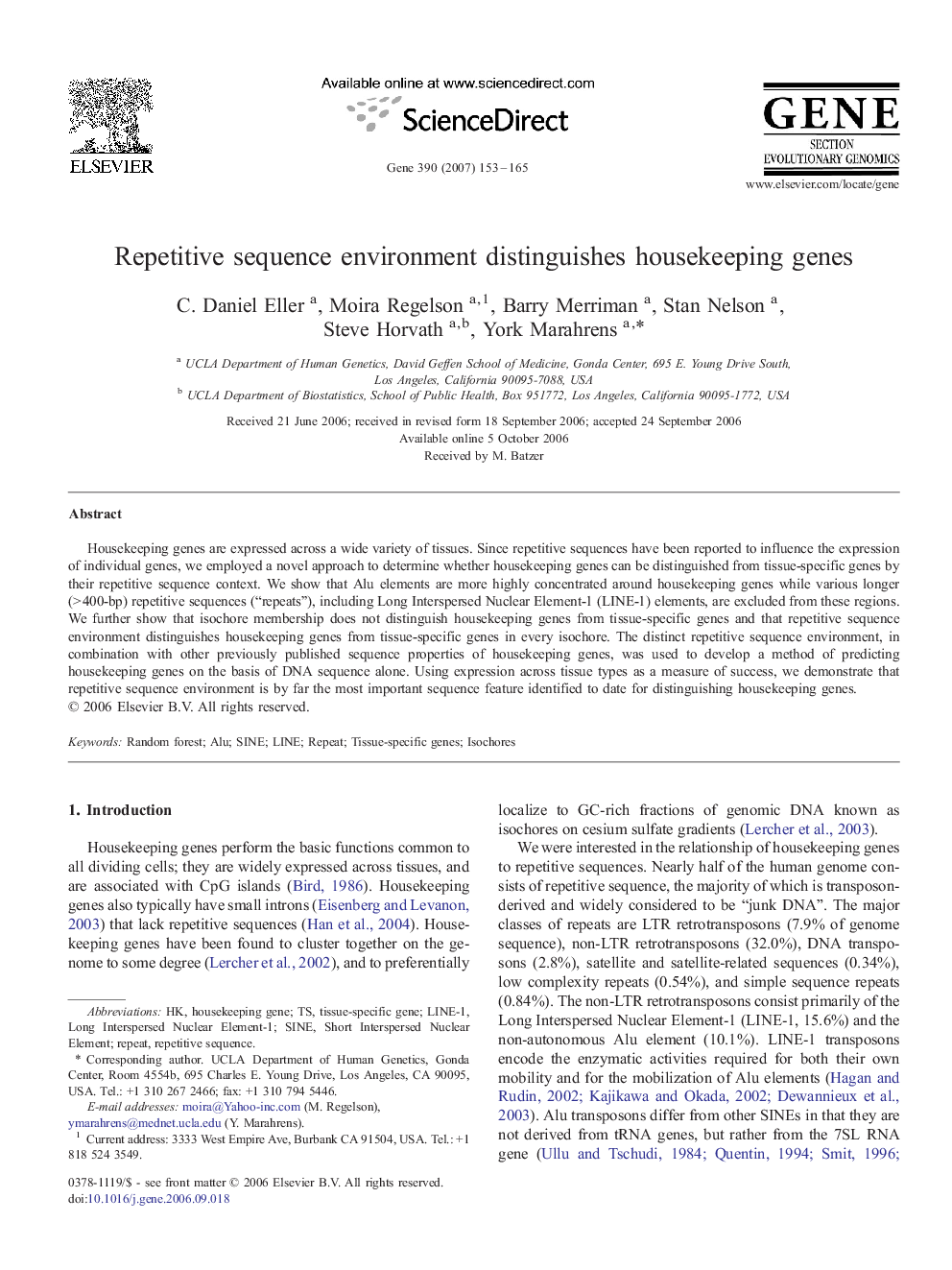| Article ID | Journal | Published Year | Pages | File Type |
|---|---|---|---|---|
| 2819843 | Gene | 2007 | 13 Pages |
Housekeeping genes are expressed across a wide variety of tissues. Since repetitive sequences have been reported to influence the expression of individual genes, we employed a novel approach to determine whether housekeeping genes can be distinguished from tissue-specific genes by their repetitive sequence context. We show that Alu elements are more highly concentrated around housekeeping genes while various longer (> 400-bp) repetitive sequences (“repeats”), including Long Interspersed Nuclear Element-1 (LINE-1) elements, are excluded from these regions. We further show that isochore membership does not distinguish housekeeping genes from tissue-specific genes and that repetitive sequence environment distinguishes housekeeping genes from tissue-specific genes in every isochore. The distinct repetitive sequence environment, in combination with other previously published sequence properties of housekeeping genes, was used to develop a method of predicting housekeeping genes on the basis of DNA sequence alone. Using expression across tissue types as a measure of success, we demonstrate that repetitive sequence environment is by far the most important sequence feature identified to date for distinguishing housekeeping genes.
